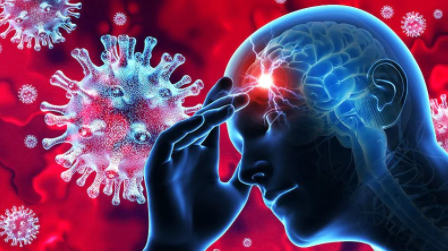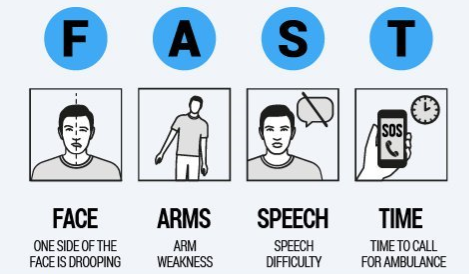A stroke occurs when the blood supply to the brain is interrupted due to a blockage in the blood vessels. The brain does not receive enough oxygen or nutrients, and brain cells begin to die.
Stroke is a Cerebrovascular disease. It means it affects the blood vessels that supply oxygen to the brain. Damage to the brain may occur if it does not receive enough oxygen.

Here Dr. Mohana Rao explains Everything You Need To Know about stroke. Dr. Mohana Rao is the Chief doctor at Dr Rao’s Hospitals. Which is one of the best Neurology Hospital in Andhra Pradesh classifies strokes into three categories:
- Ischemic stroke: This type of stroke is the most common, accounting for 87 percent of all cases. A blood clot blocks the flow of blood and oxygen to a part of the brain.
- Hemorrhagic stroke: When a blood vessel ruptures, it causes a stroke. Aneurysms or arteriovenous malformations are the most common causes (AVMs).
- A transient ischemic attack (TIA) occurs when blood flow to a part of the brain is interrupted for a short time. After a short period, regular blood flow returns, and the symptoms go away without treatment. It is referred to as a ministroke by some.
Signs and Symptoms
Dr. Mohana Rao, says that a stroke’s symptoms often arise unexpectedly. The severity of the symptoms varies.
The abbreviation “FAST” might help you remember the symptoms of a stroke. This might assist a person in seeking therapy as soon as possible. The acronym FAST stands for:
- Face drooping: Does one side of the person’s face droop when they try to smile?
- Arm weakness: Does one arm slip lower when the person tries to raise both arms?
- Speech difficulty: Is the person’s speech garbled or strange when they try to repeat a simple phrase?
- Time to act: If you see any of these signs, call the neurology hospital right away. The outcome is determined by how promptly someone is treated. They are also less likely to suffer lasting brain damage or die if they receive prompt treatment.

Medications
Ischemic and hemorrhagic strokes are treated in different ways since they have other causes and effects on the body.
Rapid diagnosis is critical for minimizing brain damage and allowing the doctor to treat the stroke with the most appropriate treatment strategy for the type.
If you’ve had an ischemic stroke, you should:
Ischemic stroke occurs when arteries become blocked or narrowed. The focus of treatment is usually on restoring adequate blood flow to the brain.
The first step in treatment is to take medications that dissolve clots and prevent new ones from forming. Your Neurologist may prescribe blood thinners such as aspirin or a tissue plasminogen activator injection (TPA).
TPA is an excellent clot-dissolving agent. However, the injection must be given within 4.5 hours of the onset of stroke symptoms.
If you’ve had a hemorrhagic stroke, you should:
A hemorrhagic stroke is caused by blood spilling into the brain. The goal of treatment is to stop the bleeding and relieve the pressure on the brain.
Taking medicines to lower brain pressure and control overall blood pressure, and preventing seizures and any acute blood vessel constriction is frequently the first step in treatment.
Diagnosis
The onset of a stroke is quick. A person should seek care at a Neurology hospital in Andhra Pradesh within three hours of the start of symptoms for the most significant results.
To establish the type of stroke, a doctor might utilize a variety of diagnostic tests. These are some of them:
- Physical examination: During this procedure, a doctor will inquire about the patient’s symptoms and medical history. Muscle strength, reflexes, sensation, vision, and coordination will all be examined. They may also take your blood pressure, listen to your carotid arteries in your neck.
- Blood tests: A doctor may conduct blood tests to determine if there is a high risk of bleeding or blood clots, as well as to measure the levels of specific substances in the blood, such as clotting factors, and to check for infection.
- CT scan: A series of X-rays can reveal brain hemorrhages, strokes, tumors, and other problems.
- MRI scan: An MRI scan creates an image of the brain using radio waves and magnets, which a doctor can use to discover damaged brain tissue.
- Carotid ultrasound: A doctor may perform an ultrasound scan to assess blood flow and see if there is any narrowing or plaque in the carotid arteries.
A brain scan in a hospital environment is the only way to confirm the type of stroke.

Risk factors and their causes
A particular set of factors can cause each type of stroke. Stroke, on the other hand, is more likely to strike someone who:
- You’re overweight or obese
- You’re 55 years old or older
- have had a stroke in the past or the family
- suffer from high blood pressure
- suffer from diabetes
- have a high level of cholesterol
- suffer from coronary artery disease, carotid artery disease, or another type of vascular disease
- binge drink excessively
- Cigarette smoke
- Usage of illegal drugs
Rehabilitative services
Stroke is a potentially life-altering event with long-term physical and mental consequences.
Stroke recovery typically necessitates the use of specialized therapy and support systems, such as:
- Speech therapy: This aids in the production and comprehension of speech. Communication can be made simpler by practice, relaxation, and a change in communication style.
- Physical therapy can aid in the relearning of mobility and coordination. It is critical to stay active, even if it is challenging at first.
- Occupational therapy: This can aid in the improvement of a person’s ability to perform daily tasks such as cooking, bathing, dressing, eating, reading, and writing.
Stroke rehabilitation is a crucial and ongoing aspect of the recovery process. Depending on the severity of the stroke, recovering a standard quality of life is frequently feasible with the correct aid and the support of loved ones.

Preventative measures
One of the doctors from the Neurology hospital in Andhra Pradesh is of the opinion that addressing the underlying causes is the most effective strategy to prevent a stroke. This can be succeeded by making modifications to one’s lifestyle, such as:
- consuming a nutritious diet
- maintaining a healthy body weight
- a regular exercise routine
- refraining from using tobacco
A well-balanced diet should include plenty of:
- berries
- fruits and veggies
- grains (whole)
- a nut
- seedlings
- Lentils
The quantity of red and processed meat should be limited, as well as cholesterol and saturated fats, in your diet. Also, keep your salt intake to a minimum to maintain a good blood pressure level.